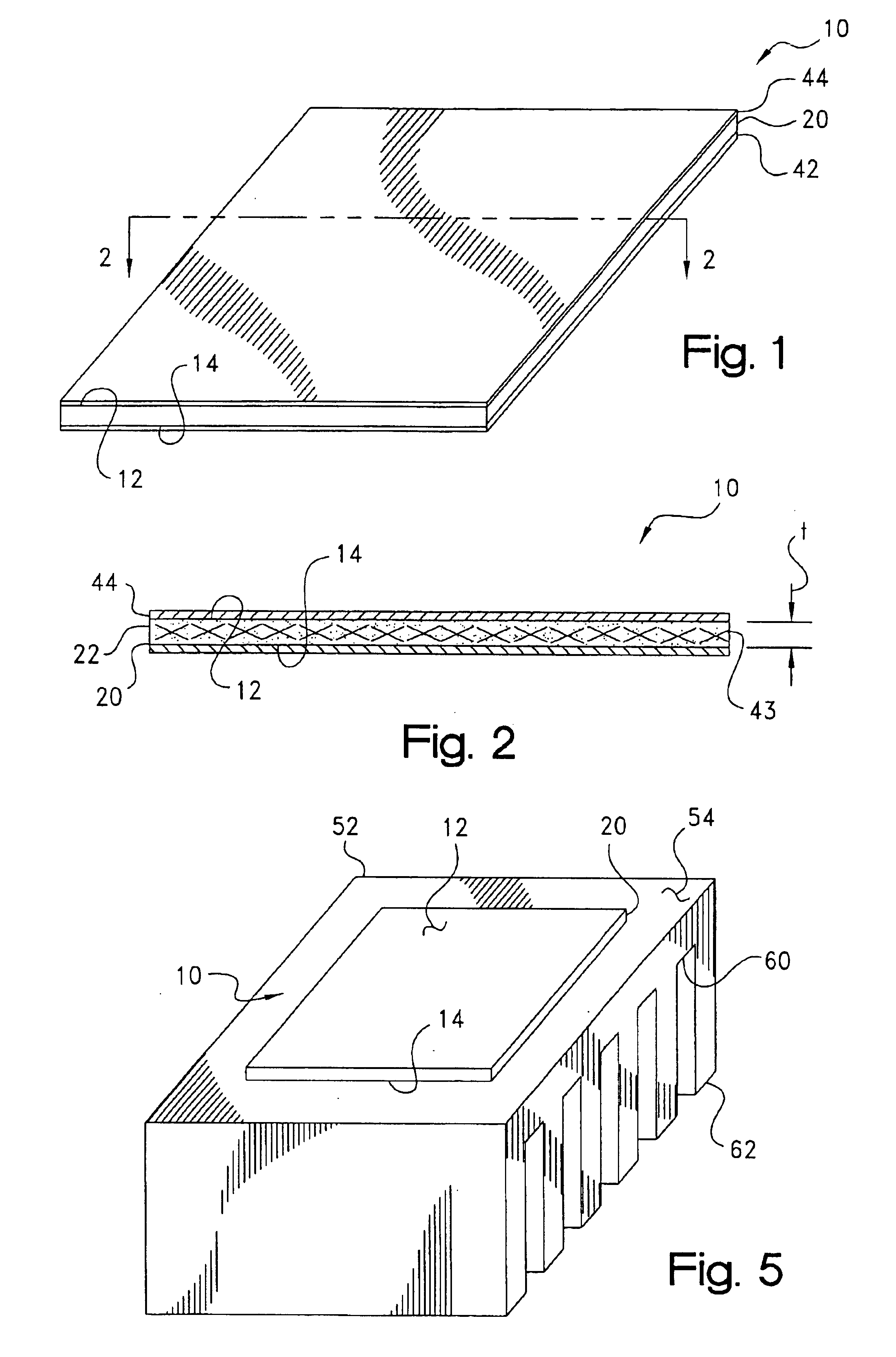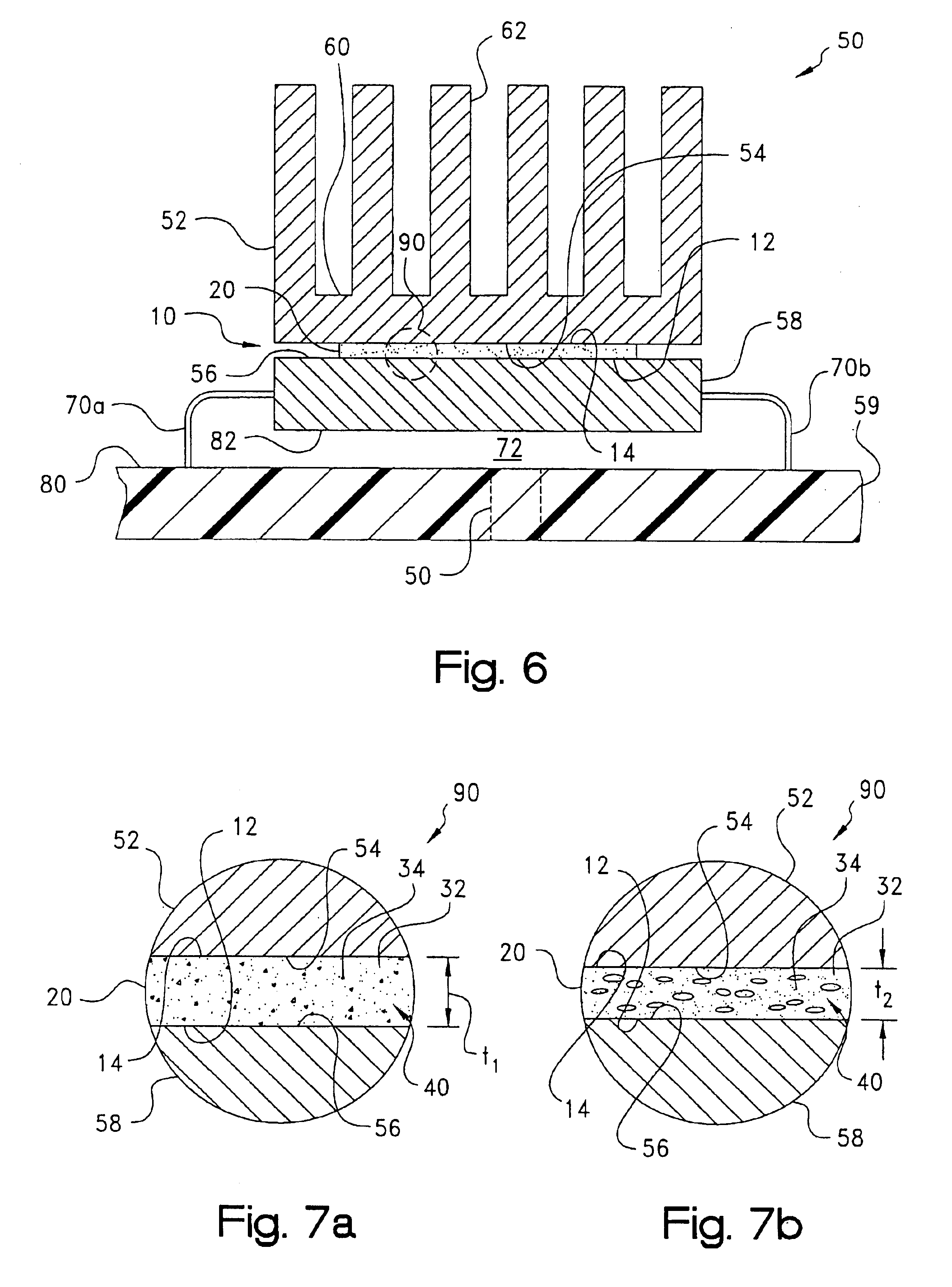Thermal management materials
a technology of management materials and electronic devices, applied in the field of thermal management materials for electronic devices, can solve the problems of increasing complexity of design, increasing the size of the device, and increasing the complexity of the circuit design of modern electronic devices, and achieve the effect of low thermal impedan
- Summary
- Abstract
- Description
- Claims
- Application Information
AI Technical Summary
Benefits of technology
Problems solved by technology
Method used
Image
Examples
example 1
[0064]In representatives formulations of the thermally-conductive compound of the present invention were prepared by admixing a fusible metal ASTM Alloy 117 in a boron nitride (BN) and zinc oxide-filled, silicone-oil based thermal grease (DC 340™, Dow Corning Corp., Midland, Mich.) having a reported thermal conductivity of 2.0×10−3 cal / s-cm-° C. Such 117 alloys are specified per ASTM B774 as eutectics having a melting point of 117° F. (47° C.) and comprising between 44.2-45.2% bismuth, 22.1-23.2% lead, 7.8-8.8% tin, 18.6-19.6% indium, and 4.8-5.8% cadmium. The specific low metal alloy (“LMA”) used in this Example 1 was a 44.7% bismuth, 22.6% lead, 8.3% tin, 19.1% indium, and 5.3% cadmium powder (AIM47™, AIM, Montreal, Quebec, Canada) having a average particle size of about 0.04-40 mils (1-1000 μm) This alloy was reported as having a an apparent thermal conductivity of about 20 W / m-K.
[0065]Samples of the thermal grease-alloy admixture were compounded at loading levels of 0, 5, 10, 15...
example 2
[0068]The thermal performance of a 15% LMA-thermal grease compound formulated as described in connection with Example 1 was further characterized by measuring impedance as a function of pressure at 70° C., 50°, and at 50° C. following a burn-in at 65° C. The measurements were obtained in accordance with ASTM 5470, and are plotted in FIG. 7 as “T851.” The results for the neat DC 340™ grease at 70° C. are also plotted in FIG. 7 as “T850.” The result show an appreciable drop in impedance as a function of temperature for the LMA-filled sample versus the neat grease.
PUM
| Property | Measurement | Unit |
|---|---|---|
| thickness | aaaaa | aaaaa |
| mean average size | aaaaa | aaaaa |
| mean average size | aaaaa | aaaaa |
Abstract
Description
Claims
Application Information
 Login to View More
Login to View More - R&D
- Intellectual Property
- Life Sciences
- Materials
- Tech Scout
- Unparalleled Data Quality
- Higher Quality Content
- 60% Fewer Hallucinations
Browse by: Latest US Patents, China's latest patents, Technical Efficacy Thesaurus, Application Domain, Technology Topic, Popular Technical Reports.
© 2025 PatSnap. All rights reserved.Legal|Privacy policy|Modern Slavery Act Transparency Statement|Sitemap|About US| Contact US: help@patsnap.com



